 "ttyymmnn" (ttyymmnn)
"ttyymmnn" (ttyymmnn)
08/19/2016 at 12:35 • Filed to: planelopnik, planelopnik history
 7
7
 11
11
 "ttyymmnn" (ttyymmnn)
"ttyymmnn" (ttyymmnn)
08/19/2016 at 12:35 • Filed to: planelopnik, planelopnik history |  7 7
|  11 11 |
Welcome to This Date in Aviation History , getting of you caught up on milestones, important historical events and people in aviation from August 17 - August 19.
!!! UNKNOWN CONTENT TYPE !!!
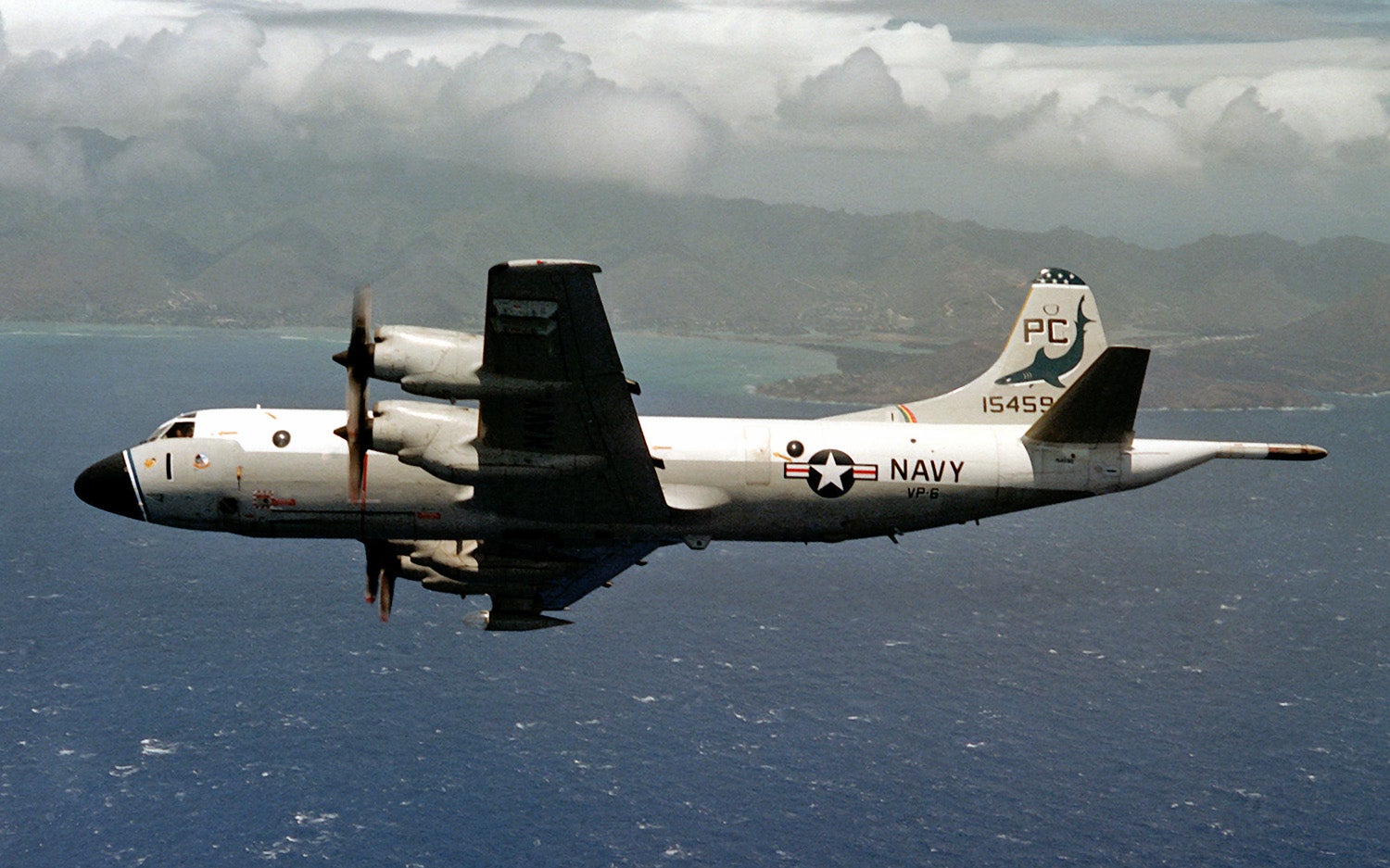
August 19, 1958 – The first flight of the Lockheed P-3 Orion. The modern carrier battle group is one of the most potent assemblages of warships ever put together, but in spite of all that firepower, it remains vulnerable to attack from submarines. Since the U-Boats of WWI, navies have struggled to find the subs before the subs find them, and aircraft have come to play a vital role in submarine detection and attack. Following WWII, the US Navy fielded its first dedicated antisubmarine warfare (ASW) aircraft with the hunter-killer team of the !!!error: Indecipherable SUB-paragraph formatting!!! . That two-aircraft system was followed by the !!!error: Indecipherable SUB-paragraph formatting!!! , the first purpose-built ASW aircraft that was large enough to carry both the equipment to detect the submarines and the weapons to destroy them. The Guardian and Tracker were both carrier-based aircraft and, in August 1957, the Navy issued a call for design proposals to meet Type Specification 146 for a new land-based aircraft to fulfill the ASW role, supplementing the !!!error: Indecipherable SUB-paragraph formatting!!! and replacing the !!!error: Indecipherable SUB-paragraph formatting!!! flying boat. To meet their needs as quickly as possible, the Navy encouraged manufacturers to modify an aircraft already in production to reduce both development time costs. At the same time as the Navy request, Lockheed was working on the !!!error: Indecipherable SUB-paragraph formatting!!! , a four-engine turboprop that carried about 100 passengers and was the first large turboprop airliner in the US when it first flew in December of 1957. Lockheed proposed to adapt the Electra, an idea that was accepted by the Navy, and a contract was awarded in May 1958. Production began immediately on a flying prototype, one that carried a mock-up of the Magnetic Anomaly Detection (MAD) boom in the rear of the aircraft and a simulated weapons bay, and still looking very much like an Electra.
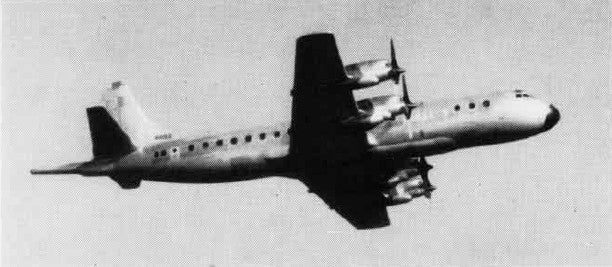
Orion prototype in flight
Following the maiden flight of the prototype, the Orion entered production, with the first operational aircraft making its maiden flight in November 1959. While the P-3 retains the wings, tail, basic structure and engines of the Electra, the fuselage was shortened, a weapons bay was added, and other avionics upgrades were made. Four
!!!error: Indecipherable SUB-paragraph formatting!!!
turboprop engines carry the Orion to a top speed of 411 knots (about 466 mph) with a combat radius of over 1,500 miles. Once on station, the Orion can loiter for up to three hours at 1,500 feet. If an enemy sub is detected, 10 wing stations and 8 internal bomb bay stations can hold up to 20,000 pounds of air-to-surface missiles, depth charges, mines, torpedoes or sonobuoys. The Orion can also carry the
!!!error: Indecipherable SUB-paragraph formatting!!!
, though that capability was retired in 1993. The P-3 was introduced in 1962, and its primary mission was to track Soviet submarines and destroy them if the Cold War suddenly became hot. Patrolling Orions were often shadowed by opposing aircraft and, in one high-profile
!!!error: Indecipherable SUB-paragraph formatting!!!
on April 1, 2001, an Orion patrolling near China was struck by a Chinese
!!!error: Indecipherable SUB-paragraph formatting!!!
fighter, causing the loss of the fighter. The Orion was forced to land on the Chinese Island of Hainan, leading to an international incident that was eventually resolved with the return of the Orion and its crew. A total of 757 Orions have been produced, a number which includes 107 aircraft built under license by Kawasaki in Japan. They are operated by a number of export countries, including Iran, who received its aircraft when Iran was still allied with the US. After more than 50 years of service, the Orion soldiers on, but it is in the process of being replaced by the
!!!error: Indecipherable SUB-paragraph formatting!!!
, another development of a civilian airliner, the
!!!error: Indecipherable SUB-paragraph formatting!!!
.
(Top photo by PHAN J. Mason, US Navy; prototype photo via US Navy)
!!! UNKNOWN CONTENT TYPE !!!
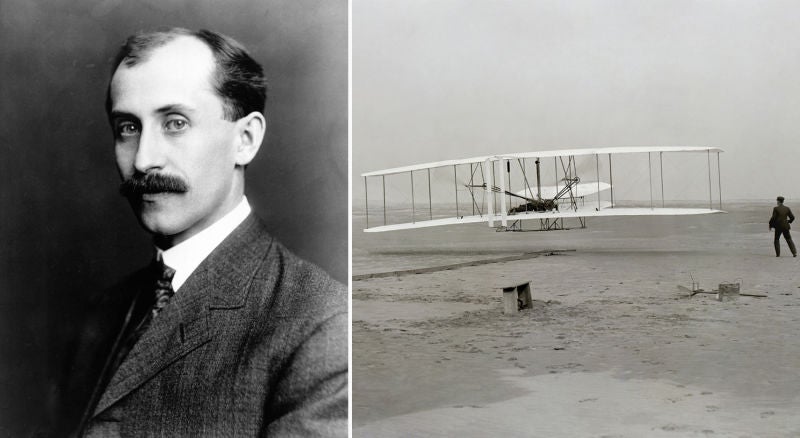
August 19, 1871 – The birth of Orville Wright. Orville Wright was one of seven children born to Milton Wright and Susan Koerner. Wilbur, his older brother, was born on April 16, 1867 near Milville, Indiana, and Orville, four years his junior, was born in Dayton, Ohio, where much of their groundbreaking work would take place. When Orville was just 8 years old, his father presented him and his brother with a toy helicopter powered by a rubber band. The two were fascinated with it and, when it broke, they built their own. That simple toy inspired the brothers to a lifelong fascination with flight. Neither boy finished high school, and Orville’s first foray into business was as a printer. He built his own press, but then the two brothers decided to capitalize on the bicycle craze sweeping the nation by starting their own bicycle repair shop, and eventually producing their own bicycles. By 1899, Orville and Wilbur fully turned their attention to aviation, requesting publications about early pioneers of flight from the Smithsonian Institution. From the beginning, the two instead focused on developing a flight control system, working on a system that warped the wings to control flight. Beginning in 1900, the brothers built a series of gliders to test their theories, building on the work of !!!error: Indecipherable SUB-paragraph formatting!!! , and they built their own wind tunnel in their bike shop to test their designs. Their breakthrough came in 1902, when they developed a means to control their gliders in all three axes of flight: !!!error: Indecipherable SUB-paragraph formatting!!! . The brothers also made a breakthrough when they conceived the propeller as a spinning wing rather than something akin to a boat screw. Now, they were ready to try powered flight. But they needed a suitably light and powerful engine, and they turned to perhaps the greatest unsung hero of the dawn of aviation, their shop mechanic !!!error: Indecipherable SUB-paragraph formatting!!! . Taylor, with guidance from the Brothers, built the water-cooled four-cylinder inline engine that would power the !!!error: Indecipherable SUB-paragraph formatting!!! . To save weight, the block was made from cast aluminum, a first for the day. The chains used to turn the propellers were similar to those used on bicycles, but were actually heavy-duty drive chains produced for use in cars. The Brothers moved their operation to Kill Devil Hills, North Carolina, near Kitty Hawk, where steady winds and tall dunes would aid their attempts. After a toss of a coin, it was Orville who made the flight that changed the world on the morning of December 17, 1903. Orville’s flight lasted just 12 seconds, and covered 120 feet at a speed of 6.8 mph, but it changed history, and ushered in the age of the airplane. Following their initial successes, the Brothers went about the task of proving their achievements to the world, and legally protecting their inventions and discoveries with patents. By 1908, they were ready to prove their invention to a skeptical world, doing so with a series of demonstration flights in France flown by Wilbur, and flights made by Orville to demonstrate the Flyer to the US Army. The pair faced numerous challenges to their patents, particularly by !!!error: Indecipherable SUB-paragraph formatting!!! , and by 1914, the Wrights were victorious. However, Wilbur had died two years earlier from typhoid fever. He did not live to see the success of the company he founded with his brother. Orville, who was not as skilled a businessman as Wilbur, sold the !!!error: Indecipherable SUB-paragraph formatting!!! to Glenn L. Martin in 1915, and made his last flight as a pilot in 1918 flying a !!!error: Indecipherable SUB-paragraph formatting!!! . But he continued to be a proponent of aviation, serving for 18 years with the !!!error: Indecipherable SUB-paragraph formatting!!! (NACA), the predecessor to the !!!error: Indecipherable SUB-paragraph formatting!!! (NASA). Orville flew for the very last time on April 19, 1944 in a !!!error: Indecipherable SUB-paragraph formatting!!! piloted by famed billionaire !!!error: Indecipherable SUB-paragraph formatting!!! . During the flight, Orville commented that the wingspan of the Connie, at 126 feet, was longer than his first flight 41 years earlier. Orville Wright died on January 30, 1948, three months after !!!error: Indecipherable SUB-paragraph formatting!!! broke the !!!error: Indecipherable SUB-paragraph formatting!!! while flying the !!!error: Indecipherable SUB-paragraph formatting!!! . In a powerful testament to the pace of technological advances initiated by the Wright Brothers, the world had progressed from the First Flight at less than 7 mph to surpassing Mach 1 in the span of Orville’s lifetime. To recognize their achievements, and celebrate the wonder of aviation that Wilbur and Orville gave birth to, !!!error: Indecipherable SUB-paragraph formatting!!! in the US is celebrated on Orville’s birthdate. (US Library of Congress photos)
!!! UNKNOWN CONTENT TYPE !!!
Short Takeoff
!!! UNKNOWN CONTENT TYPE !!!
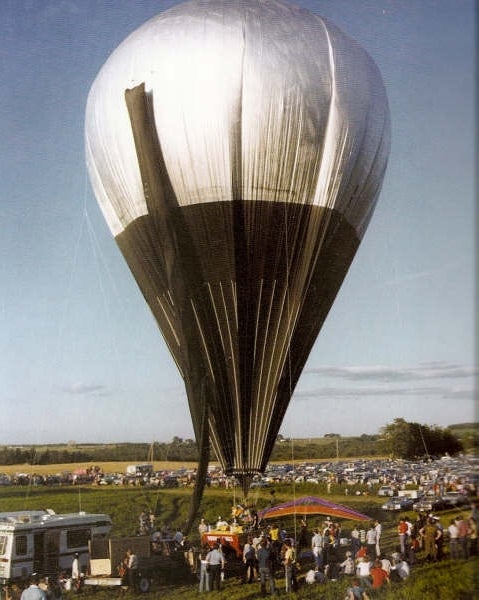
August 17, 1978 – The crew of the
Double Eagle II
makes the first transatlantic crossing by balloon.
Balloonists had been trying to cross the Atlantic Ocean since 1873, but it wasn’t until 1978 that balloonists Ben Abruzzo, Maxie Anderson, and Larry Newman made it to France after departing from Presque Isle, Maine on August 11. Newman had planned on hang gliding down to European soil after the crossing, but the glider had to be jettisoned as ballast during flight. After crossing the Irish coast, French officials offered to let them land at Le Bourget Airport, where
!!!error: Indecipherable SUB-paragraph formatting!!!
landed in 1937, but the crew instead chose to land in a field in the suburbs of Paris. The gondola of the balloon is now on display at the Steven F. Udvar-Hazy Center near Washington, DC.
(Photo by Paul Cyr via
!!!error: Indecipherable SUB-paragraph formatting!!!
)
!!! UNKNOWN CONTENT TYPE !!!
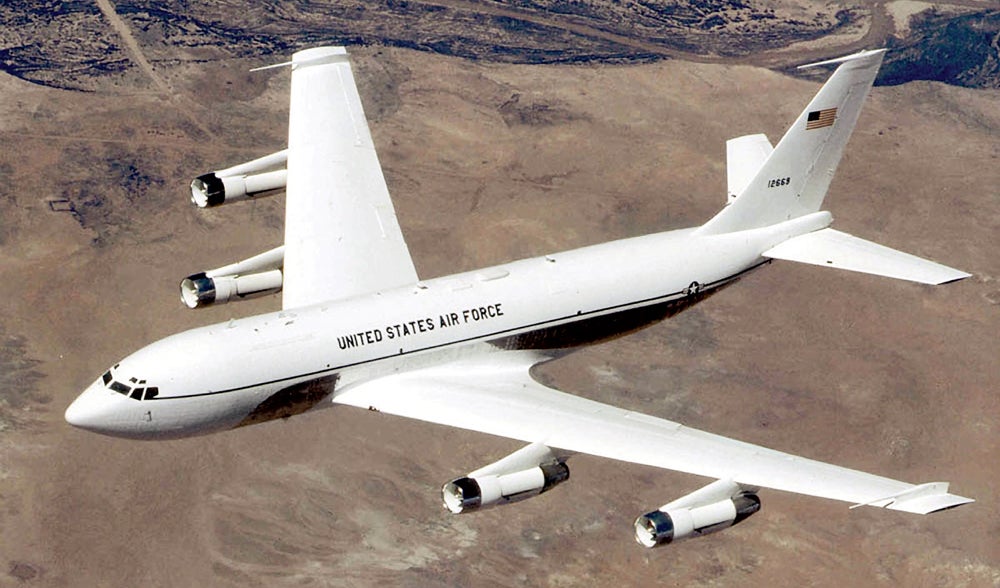
August 17, 1956 – The first flight of the Boeing C-135 Stratolifter, a large transport aircraft that was developed alongside the !!!error: Indecipherable SUB-paragraph formatting!!! . Boeing had developed the !!!error: Indecipherable SUB-paragraph formatting!!! , better known as the “Dash 80,” in response to a United States Air Force request for a jet-powered tanker. Though the vast majority of the 820 C-135s were built as tankers, a number were built as transport aircraft, with the C-135A having accommodations for 126 passengers. The C-135B received more powerful engines, and 5 were designed for VIP transport as the VC-135B. Other variants were flown for weather reconnaissance, and a number were sold to France as tankers. The C-135 received the internal Boeing designation 717 (that number was later given to the !!!error: Indecipherable SUB-paragraph formatting!!! after the two companies merged). (US Air Force photo)
!!! UNKNOWN CONTENT TYPE !!!
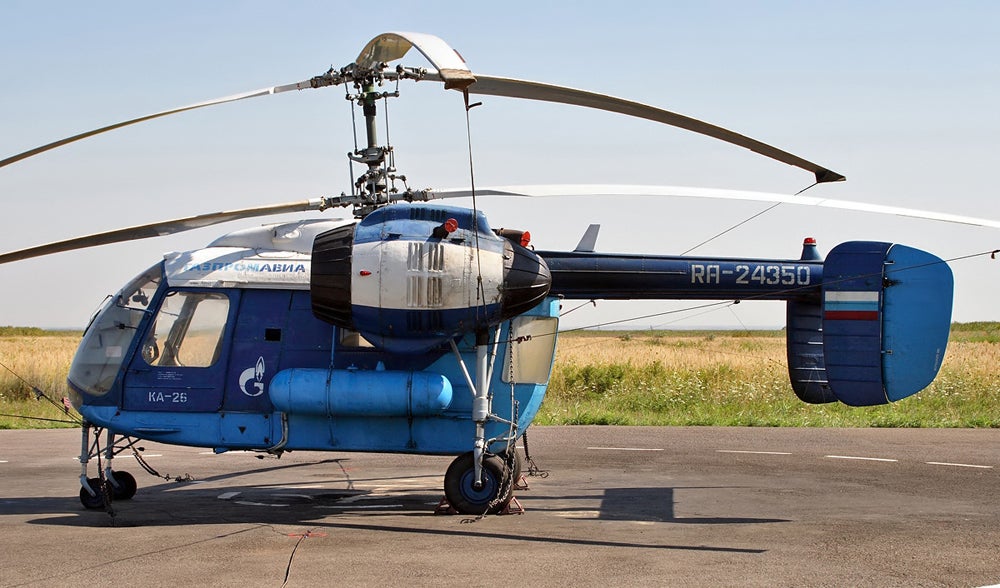
August 18, 1965 – The first flight of the Kamov Ka-26, a light utility aircraft that was built in large numbers and has found its most popular use as an agricultural top dresser. The Ka-26 (NATO reporting name Hoodlum ) is powered by two !!!error: Indecipherable SUB-paragraph formatting!!! nine-cylinder radial engines housed in external pods that drice a set of !!!error: Indecipherable SUB-paragraph formatting!!! , thus eliminating the need for a counter-torque rotor at the rear. A removable pod behind the cockpit can be configured for passengers, medevac or light cargo. A chemical hopper can also be fitted for agricultural sue. A total of 816 were produced from 1969-1985, and it was later developed into the more powerful !!!error: Indecipherable SUB-paragraph formatting!!! and !!!error: Indecipherable SUB-paragraph formatting!!! . (Photo by Igor Dvurekov via !!!error: Indecipherable SUB-paragraph formatting!!! )
!!! UNKNOWN CONTENT TYPE !!!
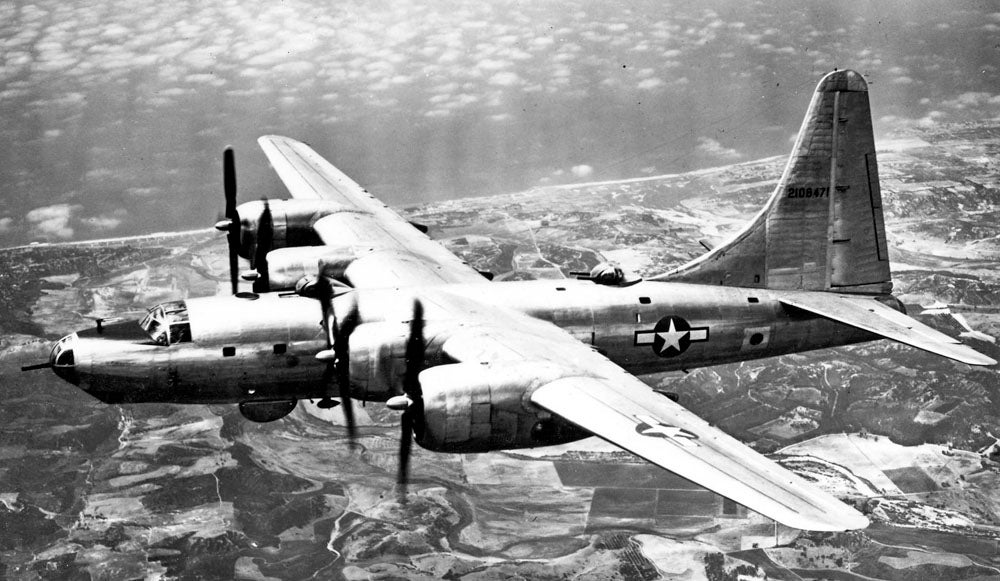
August 18, 1945 – The US suffers its last air combat casualty of WWII. Though the Japanese government had signaled its surrender three days earlier, some Japanese pilots continued to attack American bombers flying over the island on reconnaissance missions. Two !!!error: Indecipherable SUB-paragraph formatting!!! , tasked with a photo reconnaissance mission over Tokyo, were attacked by 17 Japanese fighters, heavily damaging one of the Dominators. Three crew members were seriously wounded and 19-year-old Sergeant Anthony Marchione, a photographer’s assistant, was killed. Following the attack, the propellers were removed from all Japanese aircraft to prevent future attacks. (US Air Force photo)
!!! UNKNOWN CONTENT TYPE !!!
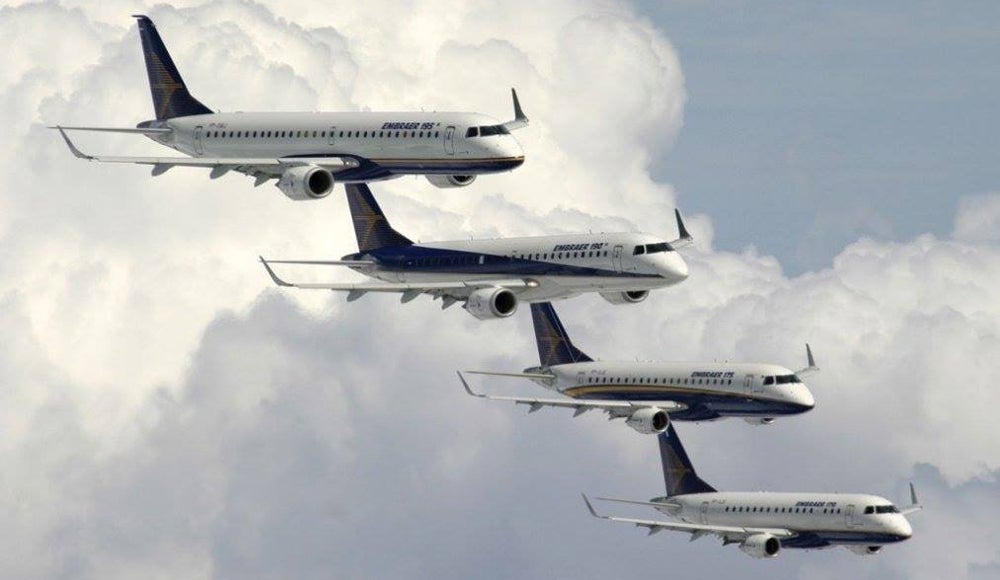
August 19, 1969 – Aircraft manufacturer Embraer is founded by Brazil’s Ministry of Aeronautics. Empresa Brasileira de Aeronáutica was originally founded as a government-owned corporation as Brazil sought to gain a foothold in aircraft manufacturing. Embraer’s first aircraft was the !!!error: Indecipherable SUB-paragraph formatting!!! , a 21-passenger twin-turboprop developed for civilian and military customers. In 1994, Embraer became a private company, though the government retains a share of the company, and it has expanded into the third-largest airplane manufacturer in the world behind Boeing and Airbus, with production facilities in the United States and China. (Photo via Embraer)
!!! UNKNOWN CONTENT TYPE !!!

August 19, 1921 – The birth of Gene Roddenberry. Though Roddenberry is best known as a TV producer and screenwriter and the creator of the Star Trek series, his early life was dominated by a career in aviation. Roddenberry was born in El Paso, Texas, and earned his pilot’s license through the Civilian Pilot Training Program, sponsored by the US Army Air Corps. He enlisted just 11 days after the Japanese attack on Pearl Harbor, eventually completing 89 combat missions piloting a !!!error: Indecipherable SUB-paragraph formatting!!! and earning the !!!error: Indecipherable SUB-paragraph formatting!!! and the !!!error: Indecipherable SUB-paragraph formatting!!! . Following the war, Roddenberry continued flying as an international airline pilot with !!!error: Indecipherable SUB-paragraph formatting!!! before retiring from aviation in 1948. Roddenberry died on October 24, 1991 at the age of 70. (Roddenberry and B-17 photo via US Air Force; Pan American Airways Constellation photo by !!!error: Indecipherable SUB-paragraph formatting!!! )
!!! UNKNOWN CONTENT TYPE !!!
Recent Aviation History Posts
!!! UNKNOWN CONTENT TYPE !!!
!!! UNKNOWN CONTENT TYPE !!!
!!! UNKNOWN CONTENT TYPE !!!
!!! UNKNOWN CONTENT TYPE !!!
!!! UNKNOWN CONTENT TYPE !!!
If you enjoy these Aviation History posts, please let me know in the comments. And if you missed any of the past articles, you can find them all at
!!!error: Indecipherable SUB-paragraph formatting!!!
.
!!! UNKNOWN CONTENT TYPE !!!
 My citroen won't start
> ttyymmnn
My citroen won't start
> ttyymmnn
08/19/2016 at 12:42 |
|
PLANES!
 BringBackTheCommodore
> ttyymmnn
BringBackTheCommodore
> ttyymmnn
08/19/2016 at 12:52 |
|
First flight of the P-3...and submarine hunting was changed forever. Truly incredible aircraft.
 facw
> ttyymmnn
facw
> ttyymmnn
08/19/2016 at 13:40 |
|
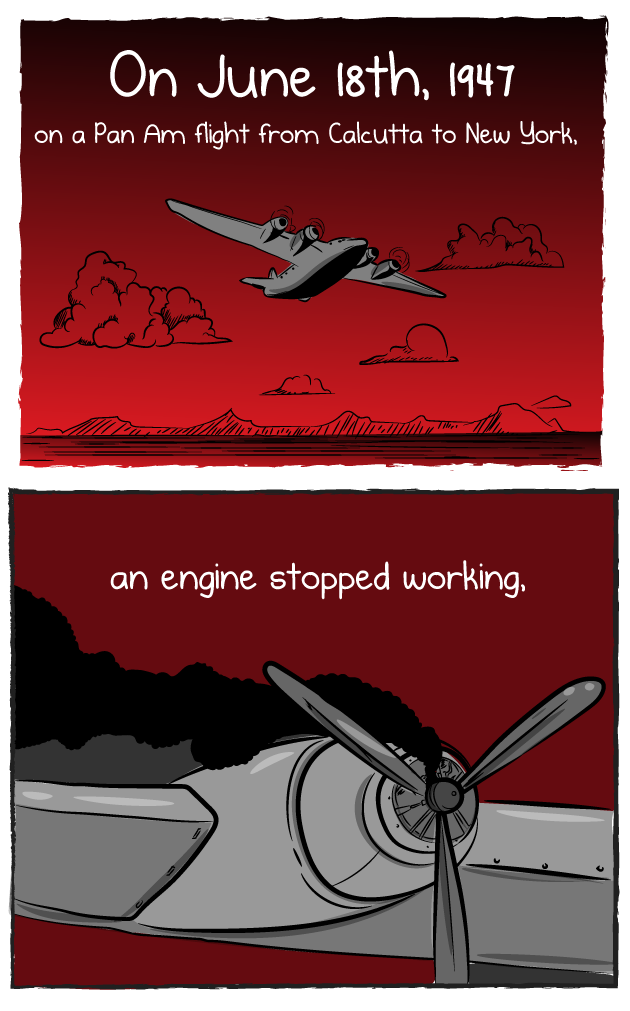
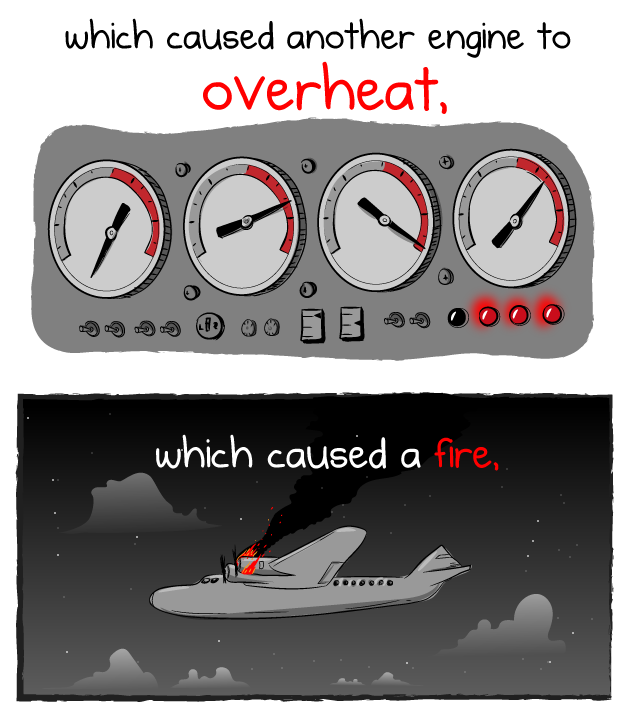
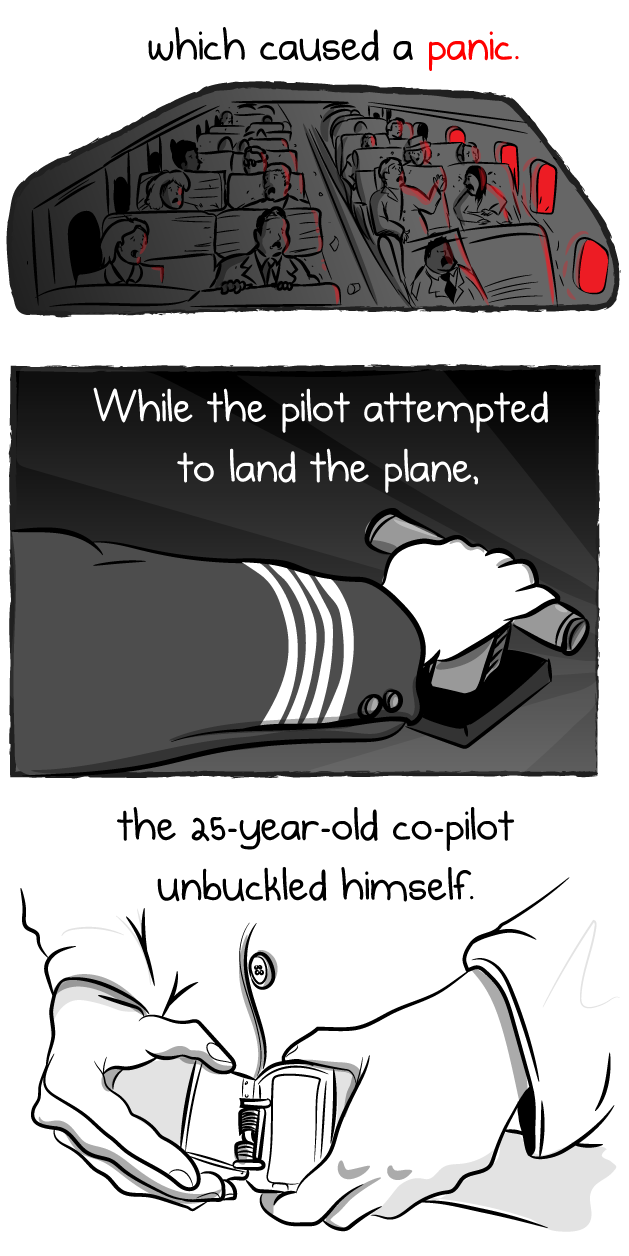





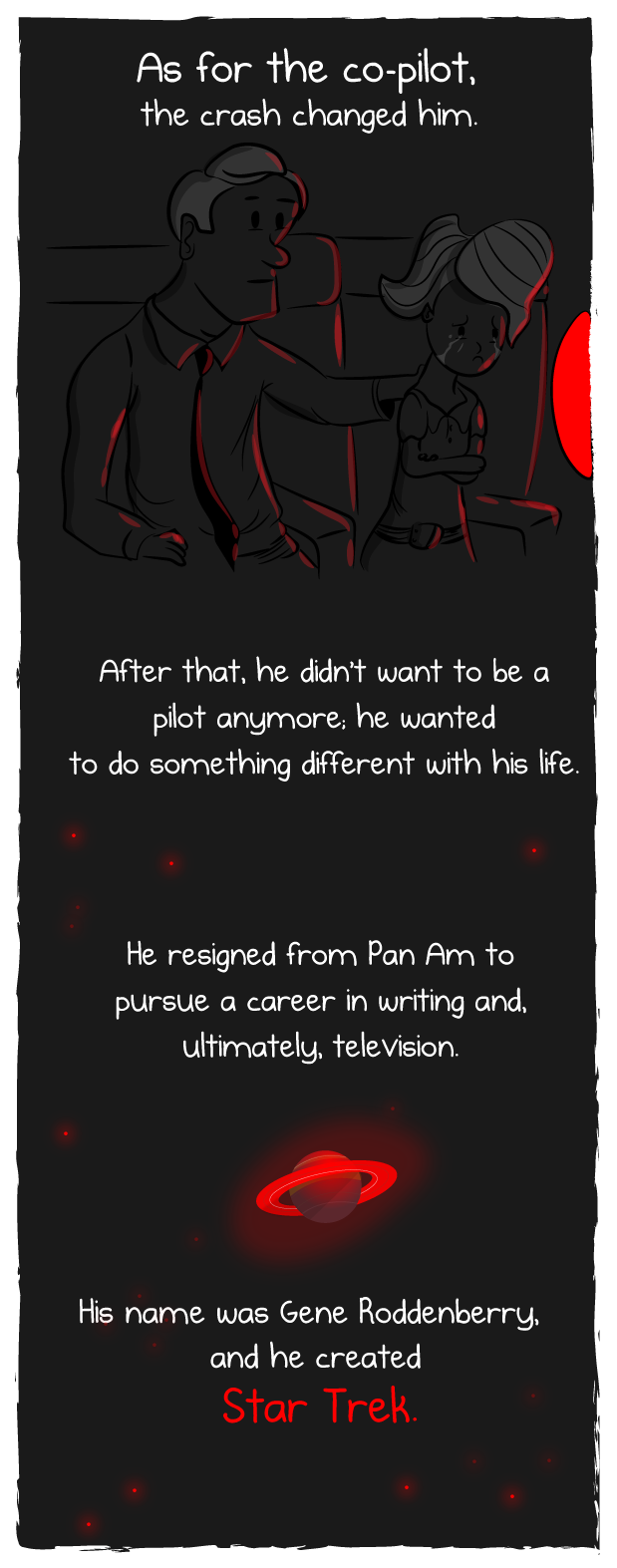
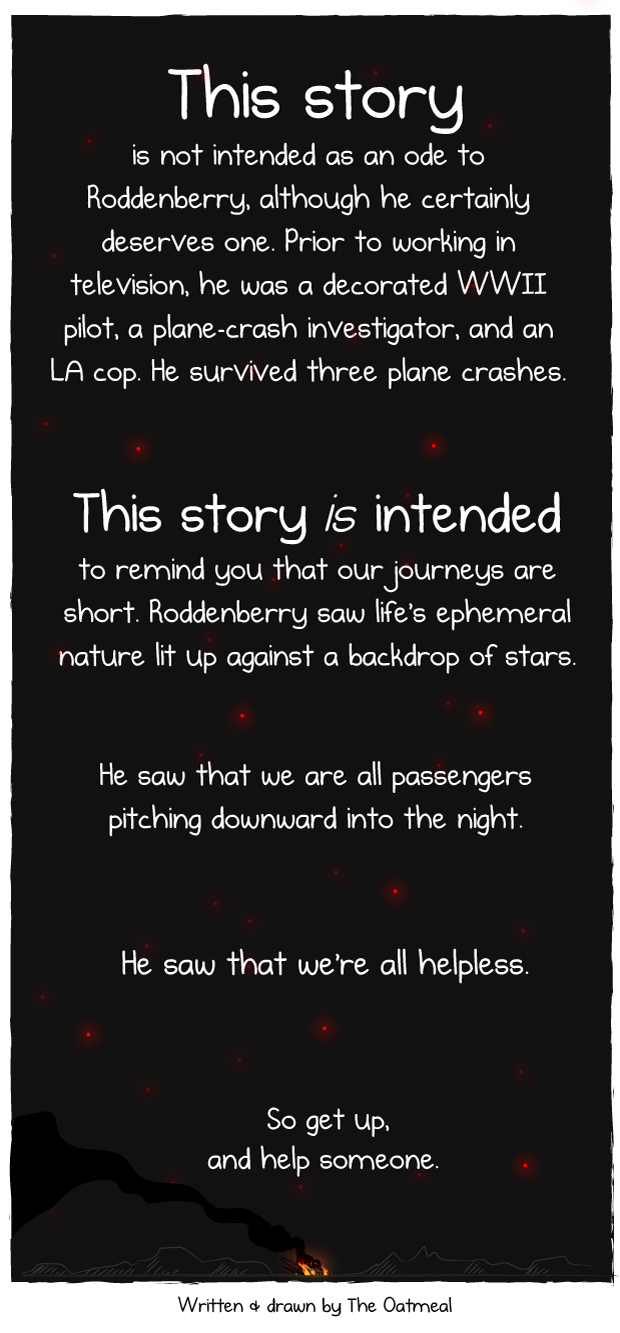
http://theoatmeal.com/comics/plane
 ttyymmnn
> facw
ttyymmnn
> facw
08/19/2016 at 14:31 |
|
Nice. Roddenberry actually survived three crashes, two while he was in the USAAF.
 ttyymmnn
> BringBackTheCommodore
ttyymmnn
> BringBackTheCommodore
08/19/2016 at 14:34 |
|
This is a great read: http://www.airspacemag.com/military-aviat…
 facw
> ttyymmnn
facw
> ttyymmnn
08/19/2016 at 14:40 |
|
Yep, the comic notes his three crashes in the section at the end, but doesn’t say where the other two were, though I figured they were likely in the military.
 ttyymmnn
> facw
ttyymmnn
> facw
08/19/2016 at 14:43 |
|
One of the crashes, which killed some of the crew, was possible pilot error, but Roddenberry was exonerated.
 BringBackTheCommodore
> ttyymmnn
BringBackTheCommodore
> ttyymmnn
08/19/2016 at 15:05 |
|
Okay, that gave me a good chuckle. Nice touch at the end.
 ttyymmnn
> BringBackTheCommodore
ttyymmnn
> BringBackTheCommodore
08/19/2016 at 15:28 |
|
Fly Navy!
 BringBackTheCommodore
> ttyymmnn
BringBackTheCommodore
> ttyymmnn
08/19/2016 at 15:40 |
|
Nose up 30°, throttle to idle, when you feel the aircraft begin to stall, full back in the stick, add full rudder (direction of rudder determined by I.P.), call out altitude, oil pressure, airspeed. Recover when told to do so by I.P.
Was about as far as I made it before airsickness finally kept me from completing training.
 ttyymmnn
> BringBackTheCommodore
ttyymmnn
> BringBackTheCommodore
08/19/2016 at 15:46 |
|
Hell, I don’t even like roller coasters.